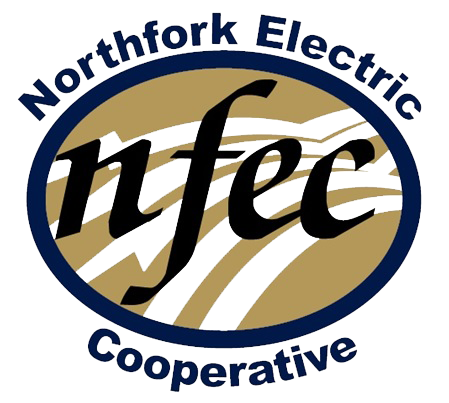WFEC event focuses on EV industry
The future of electric vehicles (EVs) looks promising in Oklahoma, as interest is exploding, according to sources within the industry itself, plus those involved in the energy sector of the state. New innovative features, longer drive times between charges and easier access to charging stations, have all been positive for the industry.
With this popularity gaining momentum as new models are being rolled out for 2020, Northfork Electric Cooperative’s power supplier, Western Farmers Electric Cooperative (WFEC), is playing an active role within the EV market in Oklahoma. The rapid advancement in EV technology in Oklahoma was the primary topic for discussion at a recent Plug in to Win event, hosted Nov. 1 in Norman.
WFEC hosted the event recently, which featured David Jankowsky, Francis Renewable Energy founder and CEO, as well as Oklahoma’s Secretary of Energy Kenneth Wagner, who both addressed the rising electric vehicle industry in Oklahoma.
Attendees were also the first to see a prototype of the first-ever electric Ford F-150 BEV, in addition to being present for the unveiling of a new comprehensive statewide EV charging station network in Oklahoma. Francis Renewable Energy is currently building the first comprehensive network of fast charging electric vehicle stations in the country to be complete in 2020.
“We wanted this event to explain the future of electric vehicles and how the industry is growing and impacting rural areas and locations along highways and interstates,” commented WFEC CEO Gary Roulet. “It’s our opportunity to bring this technology to the rural areas where we all benefit by creating more jobs and putting money back into consumers’ pockets,” he said.
“With deep energy roots in Oklahoma, we’re excited to be the first to offer uninterrupted access to this type of technology right here in our state,” Jankowsky said. “Electric cooperatives like WFEC are working hard to keep us on the cutting edge of renewable energy, and they’ve been an incredible partner to Francis in both solar and electric vehicle power.”
Slated to be operational in early 2020, the Francis Renewable Energy charging infrastructure will include an electric vehicle charging station every 25-50 miles throughout the state, which is a game changer for the EV industry. At the end of this year, Francis will have installed 110 electric vehicle charging stations in Oklahoma, said Jankowsky.
“Seeing Ford move aggressively into the EV market with its new F-150 BEV shows how consumers – and truck-loving Oklahomans – are ready to take the leap into the efficient, eco-friendly electric vehicle industry,” said Jankowsky. “Very shortly, Oklahoma will have an EV charging network to manage this growing demand,” he added.
Mark Faulkenberry, WFEC’s vice president of marketing and member relations, agreed with Jankowsky that the network of stations being installed is critical to support a growing customer base.
“When this network is complete, I don’t think anyone will surpass us for some time,” Faulkenberry said. “California may have more chargers, but not as many on a per-capita basis and not as geographically spread out.”
“Oklahoma has a huge jump start on charging networks,” commented Secretary of Energy Kenneth Wagner. “The hardest part (of infrastructure) was developed first – that is substantial,” he added.
“In Oklahoma, we are proud to be first. It’s a feather in our cap,” noted Wagner.
Oklahoma is one of only four states in the nation that meet at least 40 percent of their power demand with renewable sources, Wagner said, and the state is a national leader in carbon dioxide emissions reduction. Since 2011, the state has cut its carbon emissions by 40 percent through using wind energy and natural gas instead of coal to generate power, he pointed out.
Tony Gratson, Ford’s national government sales manager, said his company is all-in when it comes to electric vehicles. Ford has a commitment to invest $11 billion in electric vehicles through 2022. Gratson said their electric F-150 (displayed at the EV event) is still in testing, and there is no set date for release, but the company is planning to unveil its newest electric sport utility vehicle that is likely to be released into the market in 2020.
“Ford Motor Company is committed to electric vehicles, and we are working on electrifying our most popular nameplates, like the F-150 battery electric vehicle prototype,” Gratson said.
“As infrastructure is added, the consumers will learn and experience the capability of EVs, and with the introduction of more EV models, there will be a greater acceptance in the marketplace,” Gratson noted. “Ford’s EV strategy is to bring EVs to market in vehicle segments, where we are the strongest, including utilities, vans and wagons and pickup trucks,” Gratson explained.
Ford is pleased with the steady growth of EVs and the developing charging network. “This WFEC and cooperative group has a lot of passion and is very active within the EV market,” he pointed out.
Through this enthusiasm, the success from the Plug in to Win campaign, as well as benefits from a statewide charging network, the future promises much more “down the road” for the EV market.
Attending the event from NFEC were COO Lisa Dailey, Marketing/Key Accounts Rep. Chris Barton, and Communications Specialist Connie Ferrero. Larry Smith who serves on the NFEC Board of Trustees was also in attendance, as well as members Janet and Ricky Poindexter from Sayre.
